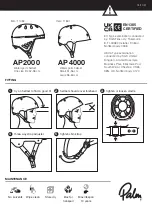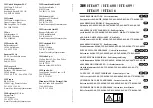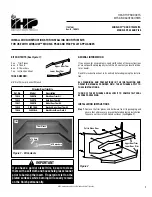
User’s Guide HDSP System RPM
© RME
15
8.7 Analog Inputs
One of the main issues when working with an AD-converter is to maintain the full dynamic
range within the best operating level. The RPM includes a discreet hardware level adjustment
which allows for a perfect adaptation of both line and phono inputs. While this setting is
controlled by software, it operates at hardware level. This way, a maximum dynamic range and
sound quality can be guaranteed.
The following input options are avilable:
•
Phono +6 dB: amplifies the phono signal by 6 dB. Maintains a sufficient level for the AD-
converter even with low level cartridges and low volume longplay records.
•
Phono 0 dB: default sensitivity, matches most cartridges and longplay records
•
Phono –6 dB: loweres the phono signal by 6 dB. May be necessary when cartridges or
longplay records provide extreme levels.
•
Line 0 dB: default sensitivity, matches most tape decks
•
Line –6 dB: lowers the Line signal by 6 dB. Matches most CD-players and other line
sources.
In case the analog line input is overloaded despite a setting of –6 dB (see Level Meters of
TotalMix), the output signal of the connected device must be lowered. When the device's line
outputs do not provide output level adjustment, a useful alternative can be to use its
headphone output, as these can be adjusted nearly always. A simple cable adapter stereo TRS
jack to 2 x RCA is available in many stores (see next page).
The phono inputs not only heavily amplify the very low level signal of the cartridge, but also
correct the frequency response according to RIAA. Bass will be raised, treble will be reduced
significantly. Overall a linear frequency response is achieved. Due to the very low input signal,
the high amplification and the heavy bass boost, phono inputs do not show Signal to Noise
ratios and THD values as known from Line inputs. At first view a SNR of 85 dB seems to be
terrible, as even 16 bit of dynamic range (96 dB) aren't achieved. This value has to be put into
perspective, which happens the moment you put the needle on the longplay record. Even a
'perfect' empty record produces an unavoidable noise of about –60 dB, far away from the
quality of the RPM's phono circuitry and AD-converters.
The RPM includes a fixed first order high-pass filter, also known as rumble filter (although such
filters never removed the typical rumble noise, as those 'needle grinding sounds' are found far
above 150 Hz). The corner frequency of 35 Hz is very low, preventing audible sound changes.
However while testing the RPM this filter has been found to be very useful to remove low
frequency problems. Such signals are generated not only when scratching, but also by simple
mechanical feedback, or by the uneven longplay record itself.
















































